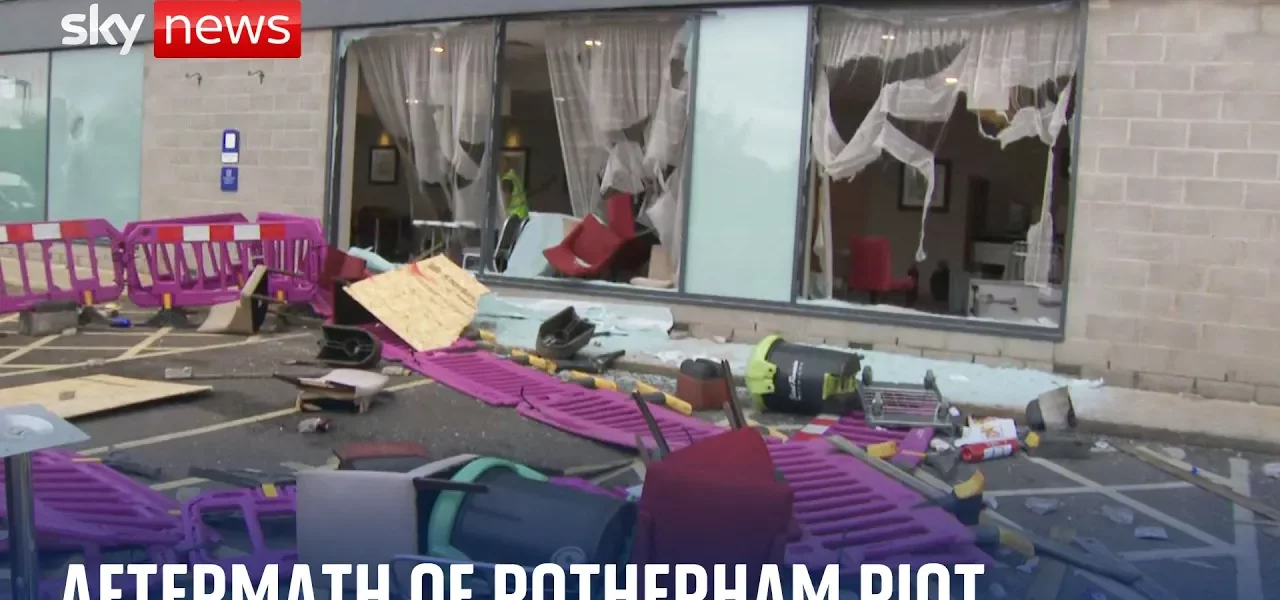Violence Erupts in Rotherham: An Analysis of Recent Events

The recent violent disturbances in Rotherham have raised significant concerns about community safety, the impact of misinformation, and the responsibilities of the government. This article delves into the details of the events, the reactions from various stakeholders, and the broader implications for society.
Introduction
On a fateful day in Rotherham, a group of individuals descended upon a hotel housing asylum seekers, not to protest peacefully, but to engage in acts of violence and destruction. This incident, characterized by vandalism and arson, has left many residents, particularly the vulnerable asylum seekers, in a state of fear and distress. The events serve as a poignant reminder of the fragility of community cohesion and the devastating effects of misinformation. As we explore the details surrounding this incident, it becomes clear that the repercussions extend beyond Rotherham, affecting perceptions of safety and tolerance across the UK.
The Incident in Rotherham
On the day of the incident, reports indicated that individuals entered the hotel with malicious intent. The motivations behind these actions appear to stem from a mix of misinformation and societal tensions. Here’s a breakdown of what transpired:
- Groups of individuals forced their way into the hotel.
- Destructive acts included smashing windows and setting fires.
- Asylum seekers were left terrified, with some seeking refuge in nearby woodlands.
Impact on Asylum Seekers
The psychological toll on the asylum seekers residing in the hotel was significant. Many reported feelings of vulnerability and fear, leading to a drastic response where some individuals chose to spend the night in the woods rather than return to the hotel. This reaction underscores the dire need for protective measures for vulnerable populations during times of unrest.
Misinformation and Its Consequences
The role of misinformation in fueling violence cannot be overstated. False narratives and exaggerated claims about asylum seekers can lead to heightened tensions within communities. In the case of Rotherham, social media posts from far-right activists incited fear and prompted an aggressive response from segments of the community. This has parallels with previous incidents in the UK, highlighting a recurring theme of how misinformation can lead to real-world violence.
Social Media’s Role
Social media platforms serve as double-edged swords in modern communication. While they can spread awareness, they can also disseminate harmful misinformation. Here are some key points regarding their influence:
- Rapid spread of misinformation can escalate tensions.
- Individual narratives can skew public perception and instigate violence.
- Community leaders must actively combat false information to maintain peace.
Government Response and Community Reactions
The government’s response to the Rotherham incident has been met with scrutiny. As the events unfolded, several key actions and reactions were observed:
- The government rejected calls to recall Parliament or deploy military forces.
- Local authorities issued warnings to participants in the riots, emphasizing accountability.
- Increased police presence was noted in response to potential further unrest.
Community Solidarity
In the face of adversity, many community members expressed solidarity with asylum seekers. Instances of individuals attempting to communicate support, such as waving and sending heart signs to children in distress, highlight the compassion that exists within communities, even amidst turmoil.
Comparative Analysis: 2011 Riots and Current Events
The 2011 riots in the UK serve as a stark reminder of how quickly civil unrest can escalate. While the current situation in Rotherham has not reached the same scale, there are significant similarities worth noting:
- Both incidents were fueled by underlying societal tensions.
- The response from law enforcement and the justice system is crucial in both cases.
- Community reactions can vary widely, from solidarity to anger.
Lessons Learned
The aftermath of the 2011 riots led to changes in policing and community engagement strategies. It is imperative that lessons from the past inform current responses to avoid repeating history.
Conclusion
The violent events in Rotherham have highlighted critical issues surrounding community safety, the impact of misinformation, and the responsibilities of both local authorities and the government. As communities grapple with these challenges, it is essential to foster dialogue, promote understanding, and combat misinformation effectively. Moving forward, we must work together to ensure that all members of society, regardless of their background, feel safe and supported. For more information on community safety and related topics, visit our related articles section.
“`




